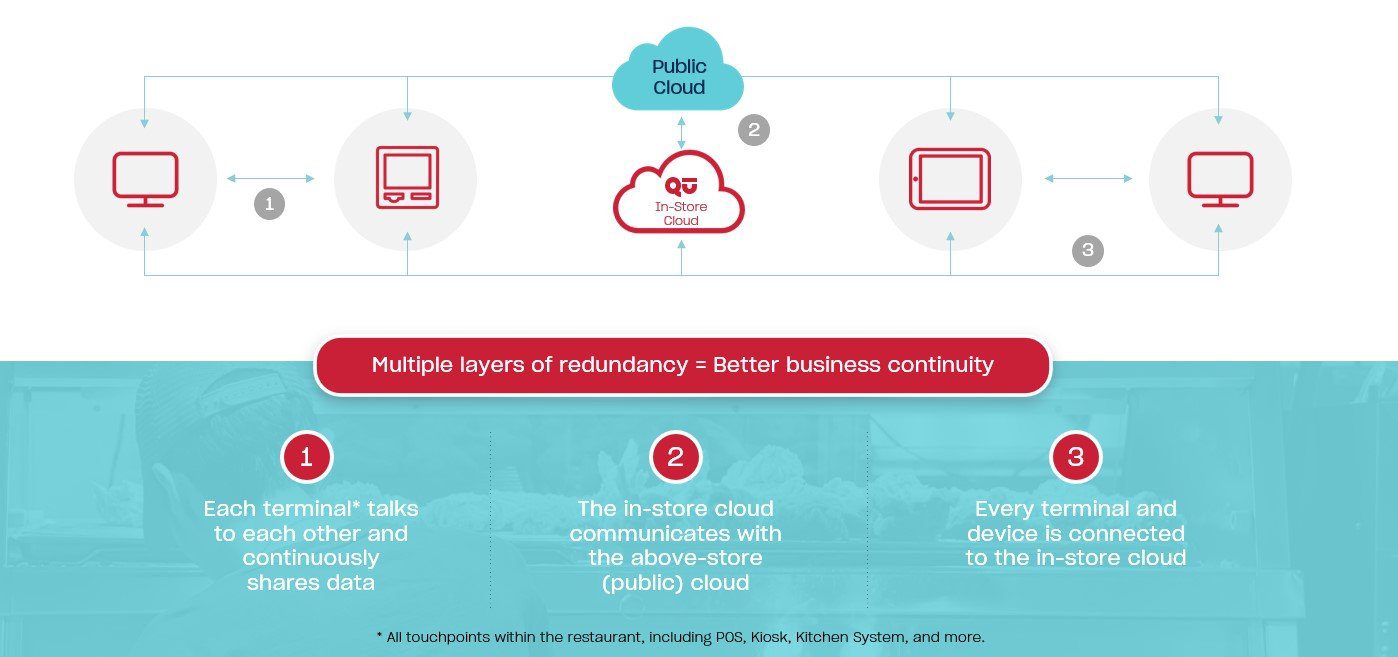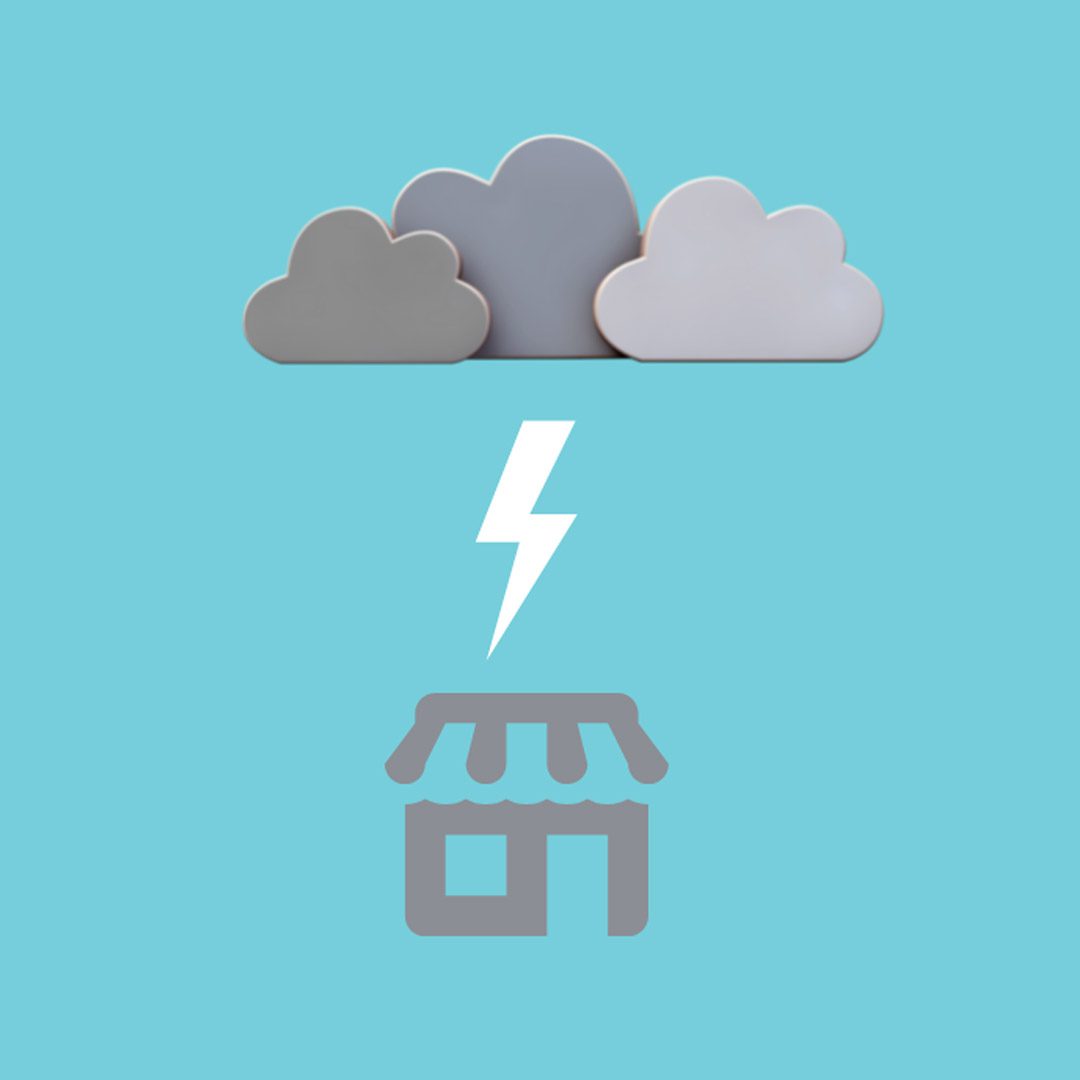Restaurants have never been so challenged to run their businesses as in today’s environment. Multiple order channels and menus, changing guest expectations for where/when they want their food, labor and supply shortages….. the last thing you need to worry about is connectivity … especially when taking valuable guest orders.
But networks can and will go down, internet interruptions happen. Alas, tech is not perfect.
The important thing is – what happens in your restaurant when there is a network disruption? Do you lose the guest transaction? Do you have to reboot? Or rely on single point of failure?
With most “cloud-based POS systems” you’re forced to slow down operations, creating staff challenges and annoying guests. Order-taking, production, payment processing are inevitably stalled or totally unavailable.
Single points of failure are just that … a FAILURE!
The techies at Qu wanted to solve this problem. So we brought the public cloud down to the store level using Edge Computing. This uber-modern computing approach allows us to replicate the cloud locally on EVERY device in the restaurant. Mind-blowing resiliency and speed. Fewer lost transactions. Continuous operations – even when network connectivity is interrupted.
Find out more about the benefits of edge computing here.
Sound too good to be true? Here how it works:
Introducing the Next Generation of Cloud
Qu’s API-first, microservices-led architecture was designed to rise above these connectivity challenges. Operational continuity is bolstered with three layers of redundancy:
- Peer to Public Cloud: Every terminal and in-store device connects independently to the public cloud, and removes single points of failure.
- Peer to Peer: Every terminal and in-store device is connected to and shares check and order data with each other, avoiding data loss if a client (or the public cloud) goes down.
- Peer to In-store Cloud: Every terminal is connected to an in-store cloud, which increases the speed of operations and adds a robust layer of redundancy.

We call this next generation of the cloud > Commerce Cloud > because enables restaurants to run all ordering and commerce transactions faster and more reliably, whether it’s in the store or on digital channels.
The goal: remove risk of downtime and enable restaurants to run more efficiently—when the network and cloud connectivity is functioning normally and when it’s not.
These 3 layers of redundancy:
- Increase the speed of local data transmission and add a third layer of redundancy, avoiding the “offline, last man standing scenario.”
- Reinforce above-store cloud resilience, and also add a crucial layer of data redundancy.
- Ensure business continuity when connections are compromised. Peer-to-peer connections provide an initial layer of in-store redundancy from an offline perspective and enhanced resiliency by removing a single point of failure.

Three layers of redundancy are underpinned by a replicated set of crucial operational APIs within the in-store cloud, which are typically housed within the public cloud. Along with the redundancy that this architecture provides enterprise brands, restaurants see:
- Higher levels of stability across their technology stacks and clients
- Faster transaction processing and offline payment acceptance
- Lower levels of latency and enhanced data redundancy
Finally, the in-store cloud also captures metadata and transaction timestamps that are necessary to reconstruct previous states and sequences of prior events. This is enabled through the recording of metadata in a blockchain-like ledger that helps restaurants recover quickly and accurately, if connectivity is lost and then subsequently restored. This functionality also helps to provide one point of truth and synchronization for customer and operational data.
Driving Better Connections, Inside and Outside the Restaurant

- Unrivaled stability and reliability, with three layers of redundancy and failover
- Fewer lost transactions, due to the ability to continue taking payments
- Higher levels of guest & employee satisfaction, with increased uptime & platform stability
- A modern, scalable technology stack that supports growth-oriented brands


